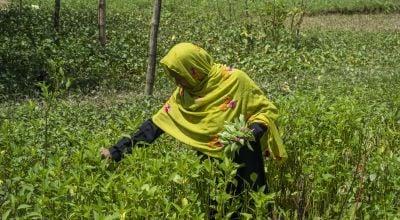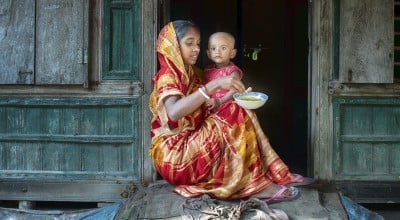
Read our 2024 annual report

Knowledge Hub
After decades of progress, a combination of conflict, climate, and the long-term effects of COVID-19 have left the world losing progress in the fight for Zero Hunger. But that doesn’t mean that we’ve lost hope.
Concern has been working in the world’s most vulnerable communities for nearly sixty years, with a focus on ending hunger as part of our larger goal to end extreme poverty. Our programmes tackle the root causes of hunger, and 25 years ago we helped to set a new standard for treating malnutrition.
With the right solutions in place — some simple, some more significant — we can undo these setbacks. The world produces enough food to feed all of its inhabitants, and it’s a cause worth fighting for. Here are 10 ways to end world hunger that work.
1. Make food financially accessible for those who need it
It’s often the case that food is available in an area, but hunger persists because nobody can afford it. This is especially true in areas affected by conflict, which tends to lead to job losses and inflation rates and few safety nets.
We help to provide those safety nets with cash transfers (including cash transfers specifically earmarked for food) and food vouchers. These are a key part of our emergency responses, for both acute disasters and longer-term crises and carry a range of benefits: Cash and vouchers are cheaper and easier to acquire and distribute, and they also help support local markets and economies.

2. Provide emergency food aid
A traditional image of ending hunger is of an emergency food security distribution, with ration kits or food baskets given out to queued-up members of a community. These kits usually include key staples like grains, pulses, oil, and salt. Emergency distributions may also consist of hot meals in areas where people don’t have the facilities to cook (like transit centres).
These are some of the most immediate ways of fighting hunger and malnutrition (even before they start). However, while they’re a good short-term solution, the sooner we can move towards longer-term initiatives, the better for everyone.
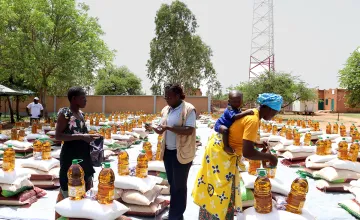
3. Treat — and anticipate — malnutrition at the community level
One of the deadliest side effects of hunger is malnutrition, which infants and young children under the age of 5 are especially vulnerable to as their bodies are in the early stages of development. In 2000, Concern helped to develop Community Management of Acute Malnutrition, or CMAM, which is now the standard for treating acute malnutrition. The programme trains community volunteers and families to be aware of the signs of malnutrition, and sets up a standard of care through ready-to-use therapeutic food (which is shelf-stable and easy to transport). In recent emergencies, this method has had cure rates in the 80th and 90th percentiles.
With 25 years of CMAM behind us, however, we’ve also worked towards better anticipating seasonal spikes in malnutrition (such as in the period between harvests), which is the logical next step: An ounce of prevention is worth a pound of cure. Learn more about the Surge Approach.

4. Switch to Climate Smart Agriculture
Climate change and hunger exist in a vicious cycle. More frequent and longer-lasting periods of extreme temperatures, flood events, and dry spells leave many families — especially those who work in agriculture — unable to put food on the table. Climate Smart Agriculture is a broad term that encompasses a number of practices. But all of these solutions allow farmers to adapt and become more resilient against an unpredictable climate.
These practices include diversifying crop varieties, conservation agriculture, and low-water sack gardens. Time and again, we’ve seen families benefit both nutritionally and financially from these solutions.
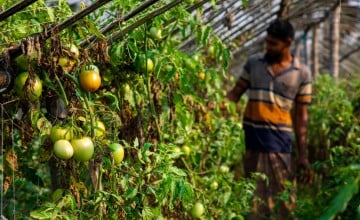
5. Invest in disaster risk reduction
Climate Smart Agriculture is just one form of resilience-building that falls under a larger umbrella of work known as disaster risk reduction. Disaster risk reduction (DRR) protects the lives and livelihoods of those who are most vulnerable to natural disasters or emergencies. Comprising a number of different approaches and strategies, DRR ultimately limits the negative impacts of these events on those who stand to lose the most. The goal is to prevent new risks, reduce existing risks, and increase overall resilience.
Investing in DRR — especially in vulnerable communities — mitigates potential losses in the wake of disasters for those who stand to lose the most. Many of the people we work with are involved in subsistence agriculture, meaning that they grow what they eat. DRR methods can help protect their homes and farms if they’re vulnerable to droughts or floods, and even help to improve their harvests with techniques like reforestation and natural resource management.
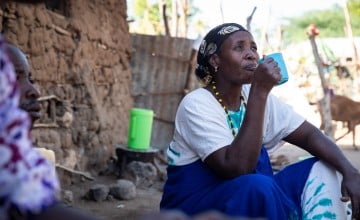
6. Focus on maternal health
A healthy pregnancy for the mother can mean a lifetime of health for the child, which is why one of our focuses with nutrition is on women of reproductive age. Ensuring that women have enough to eat and enough of the right foods — as well as the knowledge and guidance they need with their nutrition when they are pregnant and breastfeeding — means that their children are less likely to be born underweight or with chronic or congenital health and nutrition issues.
Programmes like Enhanced Responses to Nutrition Emergencies include a focus on mother-to-mother support groups to share this knowledge among women in a community who are pregnant or raising young children. Group sessions include nutritional education, cooking demonstrations, and advice and supplies for planting home gardens.
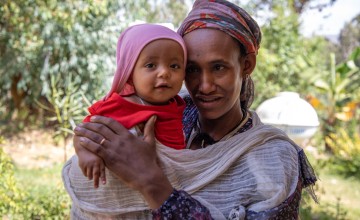
7. Improve hygiene and sanitation systems
Sometimes, people (especially children) eat enough. But if they live in an area with insufficient sanitation or poor hygiene practices, they may be susceptible to diarrhoea or other waterborne illnesses that prevent them from absorbing those nutrients. Making sure that drinking and washing water are uncontaminated can save a life — in more ways than one.

8. Design effective food storage systems
When communities have a successful harvest, they need to have access to a safe and effective storage system to ensure their food supply lasts. Some of the solutions we employ range from building or rehabilitating grain stores to innovations such as solar dryers. They work by accelerating the traditional practice of sun-drying which preserves micronutrients and prolongs shelf lives. Solar dryers are eco-friendly devices that also reduce contamination and minimise nutrient loss.

9. Embrace community
As we’ve seen in many of these examples, ending world hunger often goes hand-in-hand with community initiatives. Strengthening communities can also help to share knowledge, foster ownership around shared natural resources, and create a larger and stronger safety net against larger emergencies like a natural disaster or conflict. Learn more about community-based solutions to hunger.

10. Improve food systems, especially for the next generation
We’re currently experiencing a global youth boom: Of the world’s 8 billion people, young people ages 15 to 35 make up 15% of the population. The 1.2 billion people entering adulthood form the largest youth boom in history, with many of these young people living in low-and middle-income countries in Africa, East Asia, and South Asia.
However, we’re also currently experiencing a global hunger crisis, with roughly 733 million people go hungry every day. These two facts are not as unrelated as you may think. Global food systems are outdated, unsustainable, vulnerable, and often leave out young people. Learn more about how young people play a key role in ending hunger.
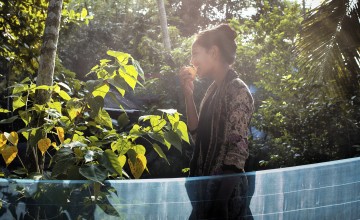
How to end world hunger: Concern’s approach
Concern’s programmes incorporate all of the elements laid out above as we seek to both treat and prevent hunger. We also engage with local and national governments to ensure these strategies are implemented at an institutional level.
In terms of treating hunger, we support national governments in strengthening their health systems to provide quality treatment for acute malnutrition using the Community Management of Acute Malnutrition (CMAM) approach. We work on behaviour change towards improved Infant and Young Child Feeding practices (IYCF) often through women’s groups such as care groups or mother-to-mother support groups. Our treatment strategies also intertwine with our agriculture activities to ensure that households produce a more diverse range of fruits, vegetables and grains to meet the nutritional needs of women and children.
In terms of prevention, our programmes seek to tackle the root causes of hunger, such as poverty and inequality, and to mitigate against the effects of crises such as conflict and climate events.



